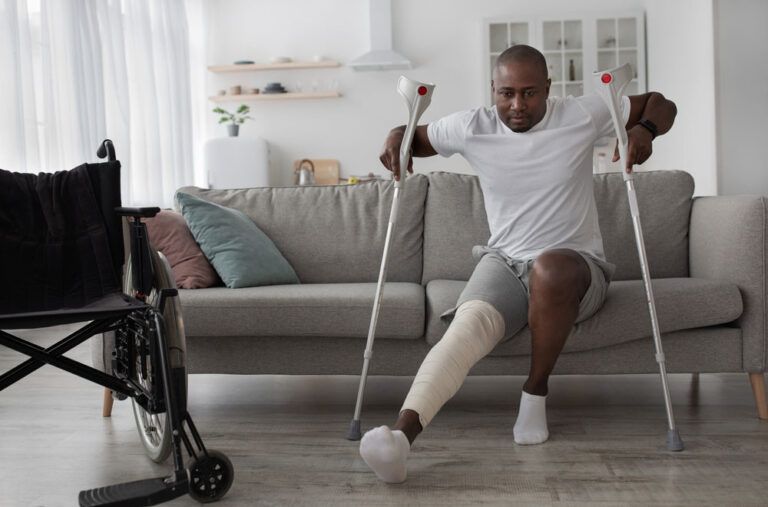Orthopedic Home Care: Tips for Recovery

Recovering from orthopedic surgery or injury can be a long and challenging process. While hospitals and rehab centers offer essential initial care, much of the recovery often continues at home. For residents in Merritt Island, FL, understanding how to create a safe and effective home environment is crucial. Whether you’re healing from a joint replacement, fracture, or ligament repair, following thoughtful recovery practices can significantly improve your outcome. This guide, brought to you by Space Coast Orthopedic, led by Dr. Luc Teurlings, focuses on key home care strategies to support orthopedic recovery.
Creating a Safe Home Environment
A safe and supportive home environment lays the foundation for effective orthopedic recovery. One of the first steps is to reduce fall risks by rearranging living spaces to make mobility easier. Clear pathways by removing rugs, electrical cords, or low furniture that could cause tripping. Install handrails or grab bars in high-risk areas like bathrooms and staircases. Lighting should be bright and accessible, particularly in hallways and entryways used at night.
Equally important is ensuring that essential items—like medications, mobility aids, and frequently used personal items—are within easy reach. A bedside table or rolling cart can help keep these necessities organized. For those using walkers or crutches, consider rearranging furniture to widen pathways and make transitions between rooms smoother. If stairs are unavoidable, using a temporary sleeping area on the ground floor may be necessary during the initial stages of recovery.
Managing Pain and Inflammation
Pain and swelling are natural parts of the healing process, but managing them effectively can make recovery more tolerable and productive. Most patients are prescribed pain medication post-surgery, and it’s essential to follow dosing schedules precisely. Do not wait until the pain becomes unbearable; staying ahead of it improves comfort and allows for more consistent movement, which is vital for healing.
In addition to medication, applying ice packs to the affected area can reduce inflammation, especially during the first few days after injury or surgery. Keep the affected limb elevated above heart level when possible to minimize swelling. Some individuals also benefit from alternating heat therapy after the acute swelling has subsided, as it can help with stiffness and circulation. Consult your physician to determine when it’s appropriate to introduce heat therapy or reduce reliance on pain medication.
The Importance of Physical Therapy at Home
Physical therapy plays a central role in orthopedic recovery. Even if formal sessions are conducted in a clinic, many patients are given “home exercise programs” designed to maintain progress between visits. These routines may include stretching, strengthening, and mobility exercises tailored to your specific injury or surgery.
Consistency is key. Skipping exercises or doing them improperly can lead to stiffness, muscle atrophy, or delayed healing. If you’re unsure how to perform a movement, ask your therapist for a demonstration or request a video reference. It’s also a good idea to log your exercise sessions and any pain or difficulties encountered. This feedback helps therapists make necessary adjustments at future appointments.
Nutrition and Hydration for Bone and Joint Healing
The body’s ability to heal is closely tied to nutrition. After orthopedic surgery or injury, your body requires more nutrients than usual to repair tissues and restore strength. Protein is particularly important, as it helps rebuild muscle and support immune function. Include lean meats, legumes, dairy, and plant-based proteins in your meals regularly.
Calcium and vitamin D are also essential for bone health. These nutrients help in rebuilding and maintaining strong bones—critical when recovering from fractures or joint surgeries. Incorporate leafy greens, fortified foods, dairy products, and spend time in the sun responsibly to ensure adequate vitamin D production. Staying well-hydrated is equally important, especially if you’re taking medications that may affect kidney function or electrolyte balance.
Staying Mentally Engaged During Recovery
Orthopedic recovery is not just a physical challenge—it can also take a toll on mental well-being. Extended periods of reduced mobility may lead to frustration, boredom, or feelings of isolation. This is especially true for patients who are used to being active or independent. Mental engagement is a critical, yet often overlooked, aspect of successful recovery.
Try to maintain a routine that includes not only your physical therapy exercises but also activities that keep your mind active. This could be reading, puzzles, virtual classes, or phone calls with friends and family. If your mood begins to decline or anxiety about recovery worsens, talk to your doctor. Early intervention for mental health concerns can prevent them from interfering with your physical recovery.
When to Seek Medical Attention
While many aspects of orthopedic care can be managed at home, certain symptoms warrant prompt medical attention. Redness, warmth, or increased pain at the surgical site may indicate infection. Likewise, if you experience chest pain, difficulty breathing, or sudden leg swelling, these could be signs of a blood clot and should be addressed immediately.
It’s also important to monitor your progress. If you find that you’re regressing in strength, mobility, or comfort, rather than gradually improving, that’s a signal to check in with your orthopedic provider. Always keep scheduled follow-ups and communicate openly about any changes in your condition, even if they seem minor.
Final Thoughts
Successful recovery from an orthopedic procedure or injury involves much more than simply resting at home. It requires a comprehensive approach that includes safety planning, pain management, consistent physical therapy, proper nutrition, mental well-being, and vigilant monitoring for complications. By integrating these practices, patients in Merritt Island, FL, can support a smoother and more effective healing process. For those seeking guidance, Space Coast Orthopedic, led by Dr. Luc Teurlings, remains a trusted resource in orthopedic care and recovery education.
Resources:
- Braddom, R. L. (2010). Physical Medicine and Rehabilitation. Elsevier Health Sciences.
- Zychowicz, M. E. (2013). Orthopedic Nursing Care Secrets. Mosby.
- Cameron, M. H., & Monroe, L. G. (2007). Physical Agents in Rehabilitation: From Research to Practice. Saunders.


Recent Comments